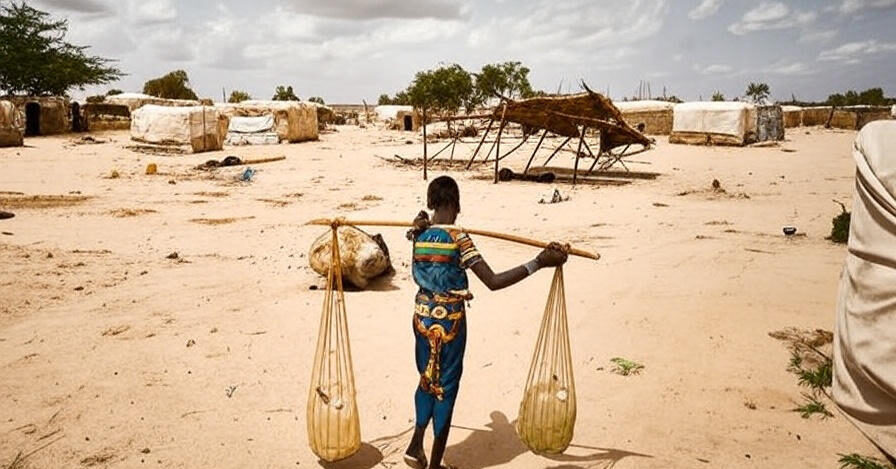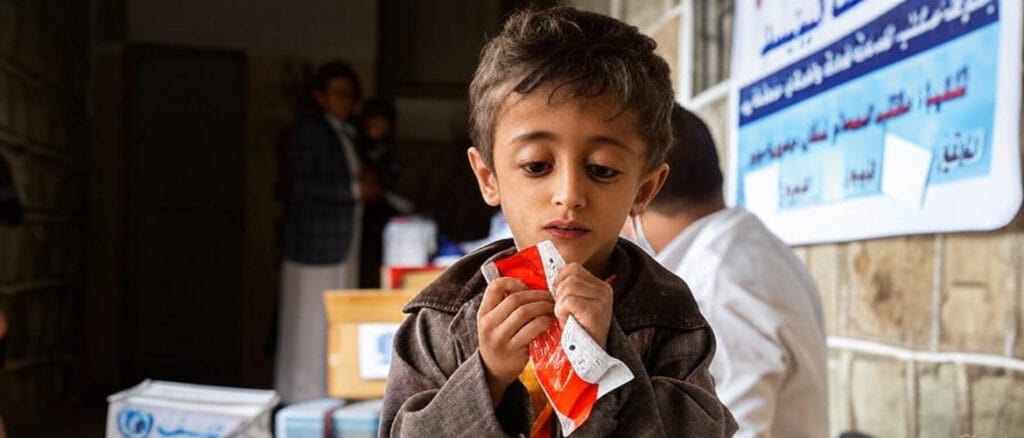
In a stark revelation that underscores the fragility of global progress, a United Nations report released on October 17, 2025, discloses that over 780 million people worldwide grappled with acute food insecurity throughout the year. This record high, driven by escalating conflicts, persistent inflationary pressures, and increasingly severe climate disasters, signals a profound humanitarian challenge. As world markets rally buoyed by U.S. inflation data aligning with forecasts—thus easing apprehensions of sharp interest rate escalations—the juxtaposition highlights a troubling disconnect between economic optimism and human suffering. Addressing this crisis demands urgent international collaboration to fortify agricultural resilience and amplify humanitarian aid, ensuring that no individual is left behind in the pursuit of sustainable food security.
The Escalating Crisis of Global Food Insecurity
The 2025 United Nations report on food security paints a sobering picture of a world where hunger’s grip tightens despite technological advancements and economic recoveries. Acute food insecurity, defined as severe limitations in accessing adequate nutrition, afflicted 22.6 percent of populations in 53 monitored countries and territories, marking the sixth consecutive year of escalation. This surge not only erodes decades of development gains but also perpetuates cycles of poverty and instability, particularly in rural areas where 80 percent of affected individuals reside.
Key Statistics Revealing the Scale
To grasp the magnitude of this issue, consider these alarming figures from the report:
- 295 million in acute hunger: Across 53 nations, this represents a 14 million increase from 2023, with catastrophic levels affecting 1.9 million people—a record since tracking began in 2016.
- Child malnutrition surge: Nearly 38 million children under five in 26 crisis zones suffered acute malnutrition, exacerbating long-term health vulnerabilities.
- Displacement’s toll: Among 128 million forcibly displaced persons globally, 95 million reside in food-crisis hotspots like Sudan and the Democratic Republic of Congo.
- Gender disparities: Women face higher food insecurity rates in every region, compounded by unequal access to resources and labor burdens.
These metrics, drawn from collaborative analyses by agencies including the FAO, UNICEF, and WFP, emphasize that food insecurity is not a transient shock but a systemic failure demanding structural reforms.
Primary Drivers Fueling the Surge

The confluence of geopolitical, economic, and environmental factors has amplified vulnerabilities, transforming isolated incidents into widespread calamities. Conflicts remain the predominant catalyst, disrupting supply chains and displacing populations in regions like Gaza, where 100 percent of residents faced acute shortages in 2024 due to aid blockages. Inflationary pressures, lingering from the COVID-19 aftermath and exacerbated by the Ukraine war, have inflated healthy diet costs by up to 10 percent in low-income areas, pushing families toward ultra-processed alternatives.
Climate Disasters and Economic Pressures
Climate change emerges as a relentless amplifier, with extreme weather events—from droughts in Africa to floods in Asia—devastating crops and inflating commodity prices. The report notes that a 10 percent food price hike correlates with a 2.7 to 4.3 percent rise in child wasting, underscoring nutrition’s direct link to economic stability. Meanwhile, macroeconomic tightening and debt burdens in fragile states hinder recovery, as seen in Sudan’s prolonged famine affecting millions.
In parallel, global economic rallies—sparked by tempered U.S. rate hike fears—offer a bittersweet contrast. While stock indices climb, the affordability of nutritious foods remains elusive for 2.3 billion people experiencing moderate to severe food insecurity, highlighting inequalities in wealth distribution. Fertilizer price spikes, lingering from 2021-2022 export restrictions, further strain agricultural inputs, with phosphate costs 20 percent above pre-pandemic levels.
Regional Hotspots and Human Impact

Africa bears the brunt, with hunger rising in most subregions due to intertwined conflicts and climate shocks. Western Asia follows suit, where political instability compounds resource scarcity. In contrast, modest global declines in undernourishment—to 673 million people or 8.2 percent of the population—mask these regional disparities, as progress stalls in Latin America and Oceania.
Vulnerable Populations at Risk
The human cost is profound, particularly for children and women. In Gaza’s pediatric clinics, malnutrition screenings reveal widespread stunting, robbing future generations of potential. Rural communities, comprising the majority of the 780 million affected, endure chronic undernutrition, perpetuating poverty cycles that hinder education and economic participation.
Pathways to Resilience and International Action
The UN report issues a clarion call for a “bold reset,” advocating cost-efficient strategies that blend humanitarian aid with long-term development. Investments in sustainable agriculture—such as climate-resilient crops and efficient irrigation—could mitigate shocks, while policy coordination enhances transparency in global food markets.
Recommended Strategies for Mitigation
To combat this crisis effectively, stakeholders should prioritize:
- Enhanced funding alignment: Shift from reactive aid to proactive resilience-building, countering the anticipated 2025 humanitarian funding cuts.
- Nutritious diet subsidies: Target low-income households to bridge affordability gaps, reducing reliance on unhealthy options.
- Conflict resolution integration: Embed food security in peacebuilding efforts, addressing root causes in hotspots like Sudan.
- Technological innovation: Leverage data analytics for early warning systems, optimizing aid distribution amid climate variability.
By fostering public-private partnerships and adhering to SDG 2 targets, the international community can reverse this trajectory. As UN Secretary-General António Guterres warns, unchecked hunger scars generations; concerted action today ensures a nourished tomorrow.
In conclusion, the 2025 food insecurity crisis, affecting 780 million souls, demands more than rhetoric—it requires decisive, equitable interventions. As economic rallies underscore global interconnectedness, let them propel investments toward eradicating hunger by 2030. For deeper insights into UN food security initiatives, explore resources from the FAO and WFP.






